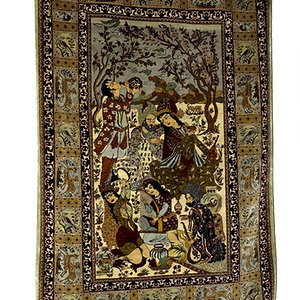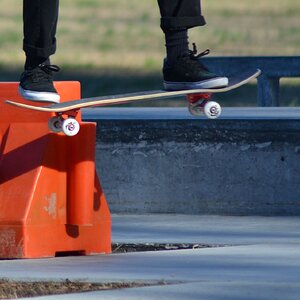Navigation
Install the app
How to install the app on iOS
Follow along with the video below to see how to install our site as a web app on your home screen.

Note: This feature currently requires accessing the site using the built-in Safari browser.
More options
You are using an out of date browser. It may not display this or other websites correctly.
You should upgrade or use an alternative browser.
You should upgrade or use an alternative browser.
Camera Recommendation?
- Thread starter Strychnine.
- Start date
webestang64
Been spending a lot of time on here!
- Joined
- May 15, 2013
- Messages
- 2,820
- Reaction score
- 1,810
- Location
- St. Louis, MO. USA
- Can others edit my Photos
- Photos NOT OK to edit
I like the Minolta SRT-101 and Rokkor-X lenses - my first SLR kit - later used Pentax and then Olympus with each having additional features.
My co-worker at the lab just got a very nice fully functional SRT-101 with 49mm lens for $85.
- Joined
- Jun 9, 2013
- Messages
- 20,580
- Reaction score
- 12,709
- Website
- moderndinosaur.wordpress.com
- Can others edit my Photos
- Photos NOT OK to edit
I like your answer. Since I don't think OP will ever show up again we can discuss some merits of teaching young people shooting film. Students you mention, yes, they might have zero experience. But they have teacher and are enrolled in a learning program. They will make mistakes, but mistakes will be discussed, understood and corrected.
And now, folks have YouTube and photo forums for this.
Now someone who wants to get his/her "feet wet" and buy K1000. That person will handle this camera like digital camera. I saw that.
That doesn't mean everyone will. It's a big assumption.
Guys after clicking started to look at the camera back. Sometimes it took 10 seconds for them to realize, that there is no picture showing, because there is no lcd screen..
Sounds like they have bigger issues than just getting used to a film camera
Second comes very basic light metering in K1000, source of most of the frames being over or under exposed.
You're underestimating the metering system.
Third is film development if shooting own b&w.Alien world.
Not necessarily. Most people start out with sending their film to a lab. If they get the film 'bug' then they may move onto developing. One thing at a time.
So, what do you think, who is Strychnine (BTW that's rat poison), dedicated student ? I don't think so. F75 gives wide spectrum of possibilities, from fully automatic to see, that it is possible to make good looking negatives, to fully manual (except for film transport) mode to understand how to make good looking negatives without help of the computer.
And now you're underestimating the student without knowing his/her capabilities or motivation.
- Joined
- Jun 9, 2013
- Messages
- 20,580
- Reaction score
- 12,709
- Website
- moderndinosaur.wordpress.com
- Can others edit my Photos
- Photos NOT OK to edit
Thanks for the tips everyone! I'm definitely looking for something that's going to be different from my DSLR. If I wanted to stick to what I know I would just keep shooting digital. I'm going to look into a K1000 as that seems to be the popular option. Going forward, what's a good place online to buy cameras. I, unfortunately, don't have any shops where I live.
Thank you, I am very aware of this.Strychnine (BTW that's rat poison)
I second the recommendation of keh.com. Their stock changes, too, so it's worth it to keep checking it regularly. Don't be afraid of their "Bargain" rating, either. The gear is often in better shape than you would expect for a 'bargain.' The "As-is" rating is a bit more accurate, however. There are other Pentax bodies, as well - don't know as much about them. One thing about the Spotmatic, however - it is essentially the same as a K1000, but it has the earlier M42 screw mount. The Pentax bodies from the K1000 onward all use a K-mount (including the DSLRs, so it's easy to use legacy lenses on digital bodies.)
timor
Been spending a lot of time on here!
- Joined
- Feb 28, 2011
- Messages
- 5,905
- Reaction score
- 890
- Location
- Toronto ON
- Can others edit my Photos
- Photos NOT OK to edit
I love your optimism which I lack in this and similar cases. Maybe just bad experience on my part. To many people without any real commitment. here quite recent one:I like your answer. Since I don't think OP will ever show up again we can discuss some merits of teaching young people shooting film. Students you mention, yes, they might have zero experience. But they have teacher and are enrolled in a learning program. They will make mistakes, but mistakes will be discussed, understood and corrected.
And now, folks have YouTube and photo forums for this.
Now someone who wants to get his/her "feet wet" and buy K1000. That person will handle this camera like digital camera. I saw that.
That doesn't mean everyone will. It's a big assumption.
Guys after clicking started to look at the camera back. Sometimes it took 10 seconds for them to realize, that there is no picture showing, because there is no lcd screen..
Sounds like they have bigger issues than just getting used to a film camera
Second comes very basic light metering in K1000, source of most of the frames being over or under exposed.
You're underestimating the metering system.
Third is film development if shooting own b&w.Alien world.
Not necessarily. Most people start out with sending their film to a lab. If they get the film 'bug' then they may move onto developing. One thing at a time.
So, what do you think, who is Strychnine (BTW that's rat poison), dedicated student ? I don't think so. F75 gives wide spectrum of possibilities, from fully automatic to see, that it is possible to make good looking negatives, to fully manual (except for film transport) mode to understand how to make good looking negatives without help of the computer.
And now you're underestimating the student without knowing his/her capabilities or motivation.
Film Came out with Vertical Black and White Stripes?
Guy never even looked at the answers.
Dave442
Been spending a lot of time on here!
- Joined
- Feb 1, 2015
- Messages
- 2,021
- Reaction score
- 567
Most the recommendations on here are for SLR cameras. I think that in their day the SLR was a very good option, just as today with the DSLR, as you have the interchangeable lens options to make a kit that will cover a wide range of subject matter and styles of shooting. However, I think that film is now more of a niche where one might specialize in a certain style when shooting film and leave the broader range to the digital realm. I expect a lot of todays film shooters are just using a couple of focal lengths. I would go with a 24 or 28mm lens for indoor events and outdoor landscape and 35mm for street.
With that being said, I would also think it good to look at rangefinder camera options in 35mm (format - as you stated). While it was a bear of a camera to operate, I really had fun using a hand-me-down Argus C-44 rangefinder. The film was hard to load and harder to rewind, metering was with a handheld Gossen, using another lens meant adding on the turret that had the 35mm, 50mm and 100mm viewing angles, it had a cold shoe for the flash, the lenses had filters that did not thread on they were dropped in and held in place by another ring (you will want filters when shooting B&W). But the nice part was the sound of the leaf shutter, much quieter than that of an SLR or DSLR and that lends itself well to street shooting - as does the metering with the handheld meter and then just raising the camera up to frame and shoot. Another great camera I used was an Agfa Super Silette fixed lens rangefinder - it allowed locking in the shutter speed and aperture from the handheld meter and then you could move both together just like you were using the P mode on todays DSLR.
There may be some bumps along the road. I was at a camera shop a few years ago when a girl that looked to be taking a college photography course was picking up her film and the guy was showing her that the entire roll was blank. She looked like she was ready to throw in the towel, but the guy pointed out that the film was not exposed by the camera (no fault of the Pentax) and she had probably just not loaded it properly and then had not checked to see that it was being wound when advancing the film. My grandfather told me you had to be able to run be able to change a roll of film, good practice for today and changing a battery and memory card.
With that being said, I would also think it good to look at rangefinder camera options in 35mm (format - as you stated). While it was a bear of a camera to operate, I really had fun using a hand-me-down Argus C-44 rangefinder. The film was hard to load and harder to rewind, metering was with a handheld Gossen, using another lens meant adding on the turret that had the 35mm, 50mm and 100mm viewing angles, it had a cold shoe for the flash, the lenses had filters that did not thread on they were dropped in and held in place by another ring (you will want filters when shooting B&W). But the nice part was the sound of the leaf shutter, much quieter than that of an SLR or DSLR and that lends itself well to street shooting - as does the metering with the handheld meter and then just raising the camera up to frame and shoot. Another great camera I used was an Agfa Super Silette fixed lens rangefinder - it allowed locking in the shutter speed and aperture from the handheld meter and then you could move both together just like you were using the P mode on todays DSLR.
There may be some bumps along the road. I was at a camera shop a few years ago when a girl that looked to be taking a college photography course was picking up her film and the guy was showing her that the entire roll was blank. She looked like she was ready to throw in the towel, but the guy pointed out that the film was not exposed by the camera (no fault of the Pentax) and she had probably just not loaded it properly and then had not checked to see that it was being wound when advancing the film. My grandfather told me you had to be able to run be able to change a roll of film, good practice for today and changing a battery and memory card.
- Joined
- Jun 9, 2013
- Messages
- 20,580
- Reaction score
- 12,709
- Website
- moderndinosaur.wordpress.com
- Can others edit my Photos
- Photos NOT OK to edit
I love your optimism which I lack in this and similar cases. Maybe just bad experience on my part. To many people without any real commitment. here quite recent one:I like your answer. Since I don't think OP will ever show up again we can discuss some merits of teaching young people shooting film. Students you mention, yes, they might have zero experience. But they have teacher and are enrolled in a learning program. They will make mistakes, but mistakes will be discussed, understood and corrected.
And now, folks have YouTube and photo forums for this.
Now someone who wants to get his/her "feet wet" and buy K1000. That person will handle this camera like digital camera. I saw that.
That doesn't mean everyone will. It's a big assumption.
Guys after clicking started to look at the camera back. Sometimes it took 10 seconds for them to realize, that there is no picture showing, because there is no lcd screen..
Sounds like they have bigger issues than just getting used to a film camera
Second comes very basic light metering in K1000, source of most of the frames being over or under exposed.
You're underestimating the metering system.
Third is film development if shooting own b&w.Alien world.
Not necessarily. Most people start out with sending their film to a lab. If they get the film 'bug' then they may move onto developing. One thing at a time.
So, what do you think, who is Strychnine (BTW that's rat poison), dedicated student ? I don't think so. F75 gives wide spectrum of possibilities, from fully automatic to see, that it is possible to make good looking negatives, to fully manual (except for film transport) mode to understand how to make good looking negatives without help of the computer.
And now you're underestimating the student without knowing his/her capabilities or motivation.
Film Came out with Vertical Black and White Stripes?
Guy never even looked at the answers.
I am in education, I have to be optimistic about people wanting to learn stuff

timor
Been spending a lot of time on here!
- Joined
- Feb 28, 2011
- Messages
- 5,905
- Reaction score
- 890
- Location
- Toronto ON
- Can others edit my Photos
- Photos NOT OK to edit
Great story. I still shoot time to time my Agfa Silette.Most the recommendations on here are for SLR cameras. I think that in their day the SLR was a very good option, just as today with the DSLR, as you have the interchangeable lens options to make a kit that will cover a wide range of subject matter and styles of shooting. However, I think that film is now more of a niche where one might specialize in a certain style when shooting film and leave the broader range to the digital realm. I expect a lot of todays film shooters are just using a couple of focal lengths. I would go with a 24 or 28mm lens for indoor events and outdoor landscape and 35mm for street.
With that being said, I would also think it good to look at rangefinder camera options in 35mm (format - as you stated). While it was a bear of a camera to operate, I really had fun using a hand-me-down Argus C-44 rangefinder. The film was hard to load and harder to rewind, metering was with a handheld Gossen, using another lens meant adding on the turret that had the 35mm, 50mm and 100mm viewing angles, it had a cold shoe for the flash, the lenses had filters that did not thread on they were dropped in and held in place by another ring (you will want filters when shooting B&W). But the nice part was the sound of the leaf shutter, much quieter than that of an SLR or DSLR and that lends itself well to street shooting - as does the metering with the handheld meter and then just raising the camera up to frame and shoot. Another great camera I used was an Agfa Super Silette fixed lens rangefinder - it allowed locking in the shutter speed and aperture from the handheld meter and then you could move both together just like you were using the P mode on todays DSLR.
There may be some bumps along the road. I was at a camera shop a few years ago when a girl that looked to be taking a college photography course was picking up her film and the guy was showing her that the entire roll was blank. She looked like she was ready to throw in the towel, but the guy pointed out that the film was not exposed by the camera (no fault of the Pentax) and she had probably just not loaded it properly and then had not checked to see that it was being wound when advancing the film. My grandfather told me you had to be able to run be able to change a roll of film, good practice for today and changing a battery and memory card.
timor
Been spending a lot of time on here!
- Joined
- Feb 28, 2011
- Messages
- 5,905
- Reaction score
- 890
- Location
- Toronto ON
- Can others edit my Photos
- Photos NOT OK to edit
In this matter my thrust in you is limitlessI love your optimism which I lack in this and similar cases. Maybe just bad experience on my part. To many people without any real commitment. here quite recent one:I like your answer. Since I don't think OP will ever show up again we can discuss some merits of teaching young people shooting film. Students you mention, yes, they might have zero experience. But they have teacher and are enrolled in a learning program. They will make mistakes, but mistakes will be discussed, understood and corrected.
And now, folks have YouTube and photo forums for this.
Now someone who wants to get his/her "feet wet" and buy K1000. That person will handle this camera like digital camera. I saw that.
That doesn't mean everyone will. It's a big assumption.
Guys after clicking started to look at the camera back. Sometimes it took 10 seconds for them to realize, that there is no picture showing, because there is no lcd screen..
Sounds like they have bigger issues than just getting used to a film camera
Second comes very basic light metering in K1000, source of most of the frames being over or under exposed.
You're underestimating the metering system.
Third is film development if shooting own b&w.Alien world.
Not necessarily. Most people start out with sending their film to a lab. If they get the film 'bug' then they may move onto developing. One thing at a time.
So, what do you think, who is Strychnine (BTW that's rat poison), dedicated student ? I don't think so. F75 gives wide spectrum of possibilities, from fully automatic to see, that it is possible to make good looking negatives, to fully manual (except for film transport) mode to understand how to make good looking negatives without help of the computer.
And now you're underestimating the student without knowing his/her capabilities or motivation.
Film Came out with Vertical Black and White Stripes?
Guy never even looked at the answers.
I am in education, I have to be optimistic about people wanting to learn stuff
cemam
TPF Noob!
- Joined
- Oct 5, 2017
- Messages
- 9
- Reaction score
- 1
- Can others edit my Photos
- Photos NOT OK to edit
Until OP gets a film camera, it is fun to emulate a SLR--set the DSLR to all manual, turn off the LCD display, pick a film-range ISO, and either daylight or tungsten white balance. Don't look at the pics until you have shot 36 exposures. I do it occasionally to remind myself to think about the process.
timor
Been spending a lot of time on here!
- Joined
- Feb 28, 2011
- Messages
- 5,905
- Reaction score
- 890
- Location
- Toronto ON
- Can others edit my Photos
- Photos NOT OK to edit
And if only you would use hand held light meter instead of in camera one, experience could be even more interesting.Until OP gets a film camera, it is fun to emulate a SLR--set the DSLR to all manual, turn off the LCD display, pick a film-range ISO, and either daylight or tungsten white balance. Don't look at the pics until you have shot 36 exposures. I do it occasionally to remind myself to think about the process.
cemam
TPF Noob!
- Joined
- Oct 5, 2017
- Messages
- 9
- Reaction score
- 1
- Can others edit my Photos
- Photos NOT OK to edit
I was spoiled, my first SLR had built-in metering.And if only you would use hand held light meter instead of in camera one, experience could be even more interesting.Until OP gets a film camera, it is fun to emulate a SLR--set the DSLR to all manual, turn off the LCD display, pick a film-range ISO, and either daylight or tungsten white balance. Don't look at the pics until you have shot 36 exposures. I do it occasionally to remind myself to think about the process.
timor
Been spending a lot of time on here!
- Joined
- Feb 28, 2011
- Messages
- 5,905
- Reaction score
- 890
- Location
- Toronto ON
- Can others edit my Photos
- Photos NOT OK to edit
If you shoot in color only, that's ok.I was spoiled, my first SLR had built-in metering.And if only you would use hand held light meter instead of in camera one, experience could be even more interesting.Until OP gets a film camera, it is fun to emulate a SLR--set the DSLR to all manual, turn off the LCD display, pick a film-range ISO, and either daylight or tungsten white balance. Don't look at the pics until you have shot 36 exposures. I do it occasionally to remind myself to think about the process.
cemam
TPF Noob!
- Joined
- Oct 5, 2017
- Messages
- 9
- Reaction score
- 1
- Can others edit my Photos
- Photos NOT OK to edit
Pretend you still need film with Yashica’s digital cameraIf you shoot in color only, that's ok.I was spoiled, my first SLR had built-in metering.And if only you would use hand held light meter instead of in camera one, experience could be even more interesting.Until OP gets a film camera, it is fun to emulate a SLR--set the DSLR to all manual, turn off the LCD display, pick a film-range ISO, and either daylight or tungsten white balance. Don't look at the pics until you have shot 36 exposures. I do it occasionally to remind myself to think about the process.
What a concept!
timor
Been spending a lot of time on here!
- Joined
- Feb 28, 2011
- Messages
- 5,905
- Reaction score
- 890
- Location
- Toronto ON
- Can others edit my Photos
- Photos NOT OK to edit
You are kidding, right ?Pretend you still need film with Yashica’s digital cameraIf you shoot in color only, that's ok.I was spoiled, my first SLR had built-in metering.And if only you would use hand held light meter instead of in camera one, experience could be even more interesting.Until OP gets a film camera, it is fun to emulate a SLR--set the DSLR to all manual, turn off the LCD display, pick a film-range ISO, and either daylight or tungsten white balance. Don't look at the pics until you have shot 36 exposures. I do it occasionally to remind myself to think about the process.
What a concept!
Similar threads
- Replies
- 3
- Views
- 335
- Replies
- 8
- Views
- 754

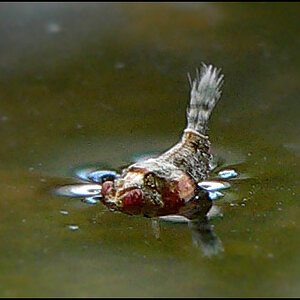

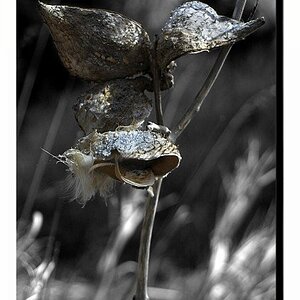
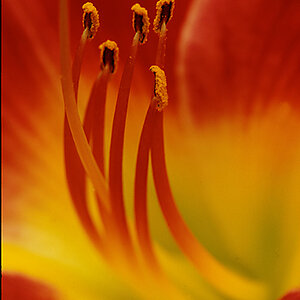
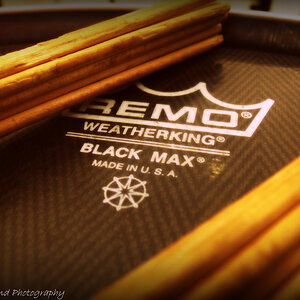
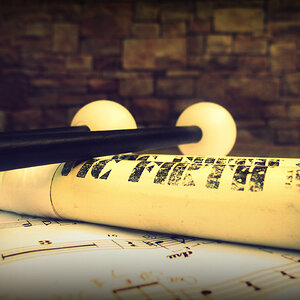
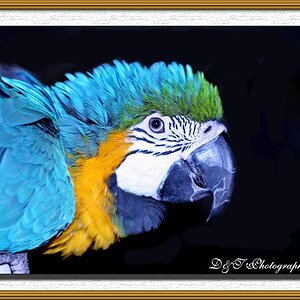
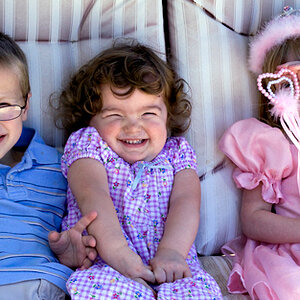

![[No title]](/data/xfmg/thumbnail/1/1592-cfae4a7ea791f96c6e2d03484be2e454.jpg?1619729144)
